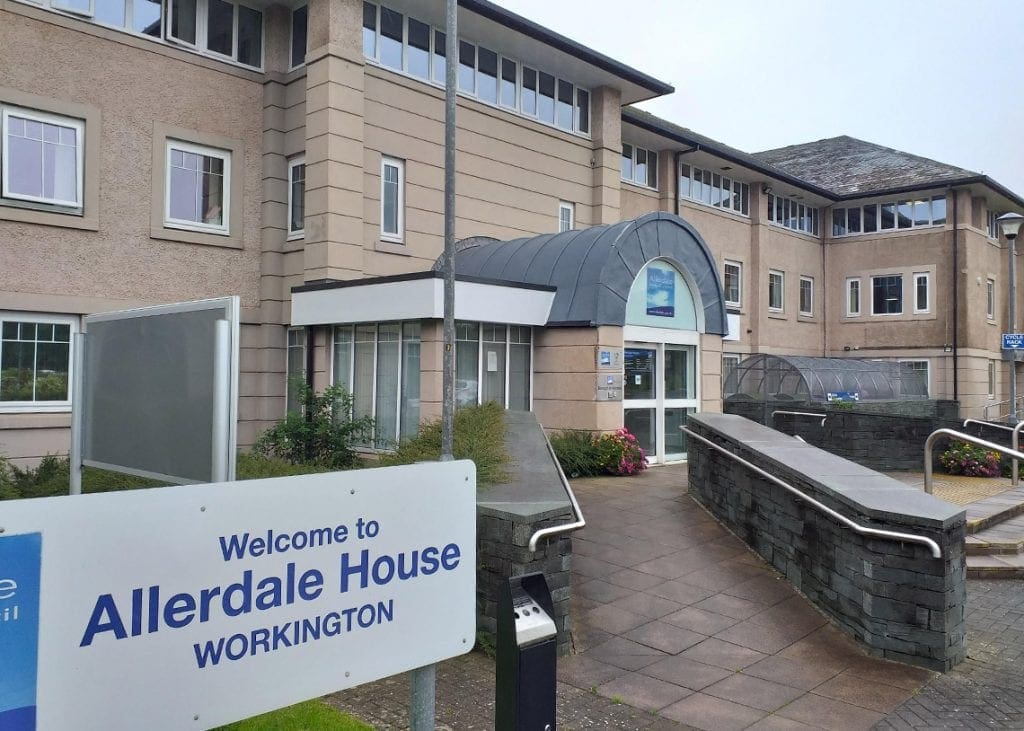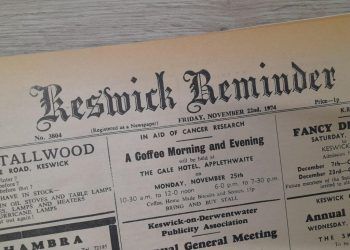
Discussions across Cumbria are continuing over the competing submissions for local government reform, which could result in the biggest change to politics in the county for nearly 50 years.
The Government is currently collecting opinions on four proposals for changes to the way local government in Cumbria works, and will continue inviting submissions to its consultation until the closing date on April 19.
Local government in Cumbria is currently organised into a two tier system, with six district councils responsible for a number of services, and an overarching county council responsible for other services.
The two tier structure was introduced in 1974, but many in the county have argued for change for a number of years.
Now, the Government is considering making a change to how local government works in Cumbria, along with Somerset and North Yorkshire.
The consultation it is currently fielding opinions on four options for changing Cumbria’s local government structure, submitted to the Ministry of Housing, Communities and Local Government by the existing councils in Cumbria.
Cumbria County Council has argued in favour of replacing all seven councils with one countywide unitary authority, while the district councils all favour splitting the county into two authorities.
There are differing opinions however on whether the split should form.
Carlisle City Council and Eden District Council are in favour of a north/south split, which would see Carlisle, Eden and the area currently served by Allerdale Borough Council brought together into a north Cumbria authority, leaving the areas currently served by Copeland Borough Council, South Lakeland District Council and Barrow Borough Council to be formed into a south Cumbria authority.
Allerdale and Copeland councils, however, are instead in favour of splitting the county in an east/west fashion, with Carlisle, Copeland and Allerdale forming the west authority, and Eden, South Lakeland and Barrow forming the east authority.
Barrow and South Lakeland councils are instead in favour of forming a unitary authority with the Lancaster City Council district, creating a Morecambe Bay authority, leaving the other four Cumbrian authorities to create a North Cumbria council.
The leaderships of both Allerdale and Copeland councils have long been clear that they do not wish to see their areas split into separate authorities, and this point was made again last week at Allerdale Borough Council’s executive meeting on Wednesday.
All councils in Cumbria are being consulted on the four options proposed for local government reform, and while discussing the consultation on Wednesday, executive member and Allerdale deputy leader,
Conservative councillor Marion Fitzgerald, said that the east/west council division proposed by Copeland and Allerdale recognises and celebrates the West Cumbrian identity, in a way that the other proposals perhaps did not.
“Historically and culturally there’s a distinct west Cumbrian identity,” Mrs Fitzgerald, ward councillor for Dalton, said.
“What we are proposing here more or less matches the division of the old Cumberland and Westmorland border.”
“The all-important West Cumbrian identity isn’t necessarily recognised in the other models that the Secretary of State would be considering.”
Mrs Fitzgerald added that while she felt the proposals for an east/west and a north/south split were in some respects quite similar, she was convinced the east/west model proposed by Allerdale and Copeland was stronger.
One of the reasons she gave for this was the arguments put forward by the two authorities in respect of the nuclear expertise that exists both in Allerdale, and in Copeland, where the Sellafield nuclear site is located.
“In Allerdale we’ve got 2,000 to 3,000 people employed at Sellafield Ltd, and also a sizeable part of the nuclear supply chain and the service industries,” Mrs Fitzgerald said.
“Everything that happens at Sellafield affects Copeland, and [it affects] Allerdale only slightly less.”
However, she added that there was a lot more to West Cumbria than its shared identity through the nuclear industry.
Allerdale and Copeland’s joint submission to the Government argues that their proposed division of the county represents two culturally coherent populations.
The bid submission notes that rugby league and football are part of the lifeblood of West Cumbria, and that local leagues include strong tribal rivalries and an interrelated competitive history within west and east boundaries.
The proposed West Cumbria region is also said to share a strong manufacturing, industrial and mining history which is embedded in culture and society.
Strong links between the population areas of the proposed West Cumbria region are also highlighted, such as the coastal area between Egremont and Maryport, with Whitehaven and Workington in particular.
Both towns are also argued to have a strong cultural and commercial relationship with Carlisle including nightlife, shopping, retail and supply chains.
It is also noted that there are no further education colleges in Copeland, as there was a strong interrelationship with Allerdale, with students from both areas travelling to the Carlisle area for study.
In addition to this, Copeland and Allerdale’s submission also details cultural links throughout the east Cumbria area, currently represented by the Eden, South Lakeland and Barrow authorities.
These include a strong emphasis on tourism, with the economies of the Eden and South Lakeland areas particularly geared towards the tourism generated by the Lake District, and a close historical relationship between Barrow and parts of South Lakeland.
While these arguments are set to be put by Allerdale Borough Council to the Secretary of State for Local Government, Robert Jenrick, as part of the consultation process, the council’s leader, Conservative Mike Johnson, noted on Wednesday that he hoped to encourage other organisations and individuals to respond to the consultation.
Allerdale’s role in the consultation process was also discussed at the authority’s overview and scrutiny committee meeting, held on Friday.
At this meeting, council leader Mr Johnson explained to committee members that one feature of the joint Allerdale and Copeland submission was the proposed inclusion of a Cumbria-wide combined authority, led by an elected mayor, which is a position also expressly supported as a key feature of the joint Carlisle and Eden bid.
A combined authority would not be another council. It would instead act as a strategic body sitting on top of both authorities, which would drive strategic leadership across the area.
There are currently 10 combined authorities across England, for regions that have a closely connected cultural and economic footprint, such as the Greater Manchester area, the West Midlands area, and the Tees Valley area.
While the installation of an elected mayor would be up to the combined authority itself, Mr Johnson told members of the Allerdale overview and scrutiny committee that the creation of a directly elected mayor position would be “for everybody’s benefit”, given that it would open up “a whole new funding stream available to us”.
“Government want to make deals with mayors,” he said.
“They’ve set aside billions of pounds in additional funding to support mayors in delivering those ambitions that they have in the counties that they represent.
“You’re talking probably an additional £3bn that’s available to directly elected mayors that wouldn’t be available to a normal council.
“There are devolution deals available if you don’t have an elected mayor, however they’re not as enhanced as what they would be if you had a directly elected mayor.”
The consultation on the proposals for local government reorganisation in Cumbria will end on April 19.
Submissions to the consultation can be made via an online form, by email or by post.








